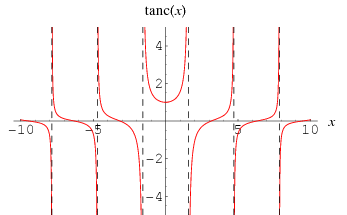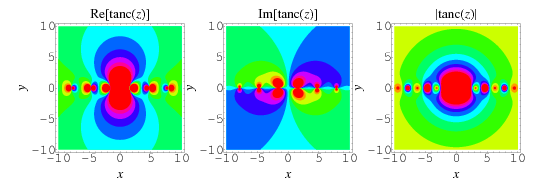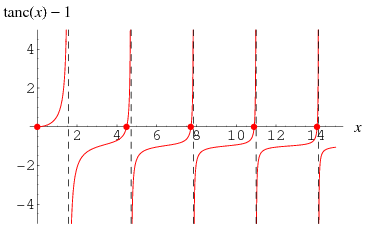

تاريخ الرياضيات

الاعداد و نظريتها

تاريخ التحليل

تار يخ الجبر

الهندسة و التبلوجي


الرياضيات في الحضارات المختلفة

العربية

اليونانية

البابلية

الصينية

المايا

المصرية

الهندية


الرياضيات المتقطعة

المنطق

اسس الرياضيات

فلسفة الرياضيات

مواضيع عامة في المنطق


الجبر

الجبر الخطي

الجبر المجرد

الجبر البولياني

مواضيع عامة في الجبر

الضبابية

نظرية المجموعات

نظرية الزمر

نظرية الحلقات والحقول

نظرية الاعداد

نظرية الفئات

حساب المتجهات

المتتاليات-المتسلسلات

المصفوفات و نظريتها

المثلثات


الهندسة

الهندسة المستوية

الهندسة غير المستوية

مواضيع عامة في الهندسة

التفاضل و التكامل


المعادلات التفاضلية و التكاملية

معادلات تفاضلية

معادلات تكاملية

مواضيع عامة في المعادلات


التحليل

التحليل العددي

التحليل العقدي

التحليل الدالي

مواضيع عامة في التحليل

التحليل الحقيقي

التبلوجيا

نظرية الالعاب

الاحتمالات و الاحصاء

نظرية التحكم

بحوث العمليات

نظرية الكم

الشفرات

الرياضيات التطبيقية

نظريات ومبرهنات


علماء الرياضيات

500AD

500-1499

1000to1499

1500to1599

1600to1649

1650to1699

1700to1749

1750to1779

1780to1799

1800to1819

1820to1829

1830to1839

1840to1849

1850to1859

1860to1864

1865to1869

1870to1874

1875to1879

1880to1884

1885to1889

1890to1894

1895to1899

1900to1904

1905to1909

1910to1914

1915to1919

1920to1924

1925to1929

1930to1939

1940to the present

علماء الرياضيات

الرياضيات في العلوم الاخرى

بحوث و اطاريح جامعية

هل تعلم

طرائق التدريس

الرياضيات العامة

نظرية البيان
Tanc Function
المؤلف:
Sloane, N. J. A.
المصدر:
Sequences A079330, A088989, and A115365 in "The On-Line Encyclopedia of Integer Sequences."
الجزء والصفحة:
...
24-4-2020
1553
Tanc Function



By analogy with the sinc function, define the tanc function by
|
(1) |
Since  is not a cardinal function, the "analogy" with the sinc function is one of functional structure, not mathematical properties. It is quite possible that a better term than
is not a cardinal function, the "analogy" with the sinc function is one of functional structure, not mathematical properties. It is quite possible that a better term than  , as introduced here, could be coined, although there appears to be no name previously assigned to this function.
, as introduced here, could be coined, although there appears to be no name previously assigned to this function.
The derivative is given by
 |
(2) |
The indefinite integral can apparently not be done in closed form in terms of conventionally defined functions.

This function commonly arises in problems in physics, where it is desired to determine values of  for which
for which  , i.e.,
, i.e.,  . This is a transcendental equation whose first few solutions are given in the following table and illustrated above.
. This is a transcendental equation whose first few solutions are given in the following table and illustrated above.
 |
OEIS | root |
| 0 | 0 | |
| 1 | A115365 | 4.4934094579090641753... |
| 2 | 7.7252518369377071642... | |
| 3 | 10.904121659428899827... | |
| 4 | 14.066193912831473480... | |
| 5 | 17.220755271930768739... |
The positive solutions can be written explicitly in series form as
 |
(3) |
(OEIS A079330 and A088989), where the series in  can be found by series reversion of the series for
can be found by series reversion of the series for  and
and
 |
(4) |
for  a positive integer (D. W. Cantrell, pers. comm., Jan. 3, 2003). In practice, the first three terms of the series often suffice for obtaining approximate solutions.
a positive integer (D. W. Cantrell, pers. comm., Jan. 3, 2003). In practice, the first three terms of the series often suffice for obtaining approximate solutions.

Because of the vertical asymptotes of  as odd multiples of
as odd multiples of  , this function is much less well-behaved than the sinc function, even as
, this function is much less well-behaved than the sinc function, even as  . The plot above shows
. The plot above shows  for integers
for integers  . The values of
. The values of  giving incrementally smallest values of
giving incrementally smallest values of  are
are  , 11, 1317811389848379909481978463177998812826691414678853402757616, ...(OEIS A079331), corresponding to values of
, 11, 1317811389848379909481978463177998812826691414678853402757616, ...(OEIS A079331), corresponding to values of  ,
,  ,
,  ,
,  , .... Similarly, the values of
, .... Similarly, the values of  giving incrementally largest values of
giving incrementally largest values of  are
are  , 122925461, 534483448, 3083975227, 214112296674652, ... (OEIS A079332), corresponding to 1.55741, 2.65934, 3.58205, 4.3311, 18.0078, 18.0566, 556.306, ... (D. W. Cantrell, pers. comm., Jan. 3, 2002). The following table (P. Carmody, pers. comm., Nov. 21, 2003) extends these results up through the 194,000 term of the continued fraction. All these extrema correspond to numerators of the continued fraction expansion of
, 122925461, 534483448, 3083975227, 214112296674652, ... (OEIS A079332), corresponding to 1.55741, 2.65934, 3.58205, 4.3311, 18.0078, 18.0566, 556.306, ... (D. W. Cantrell, pers. comm., Jan. 3, 2002). The following table (P. Carmody, pers. comm., Nov. 21, 2003) extends these results up through the 194,000 term of the continued fraction. All these extrema correspond to numerators of the continued fraction expansion of  . In addition, since they must be near an odd multiple of
. In addition, since they must be near an odd multiple of  in order for
in order for  to be large, the corresponding denominators must be odd. There is also a very strong correlation between
to be large, the corresponding denominators must be odd. There is also a very strong correlation between  and the value of the subsequent term in the continued fraction expansion (i.e., a high value there implies the prior convergent was a good approximation to
and the value of the subsequent term in the continued fraction expansion (i.e., a high value there implies the prior convergent was a good approximation to  ).
).
| smallest | convergent | largest |
| 1 | 1.55741 | |
 |
2 | |
 |
4 | |
| 15 | 2.659341 | |
| 17 | 3.582052 | |
| 19 | 4.331096 | |
| 29 | 18.007800 | |
 |
118 | |
 |
136 | |
| 233 | 18.056613 | |
| 315 | 556.306227 | |
 |
1134 | |
 |
1568 | |
 |
1718 | |
 |
2154 | |
 |
2468 | |
 |
3230 | |
| 3727 | 2750.202396 | |
| 3763 | 10539.847388 | |
 |
5187 | |
 |
8872 | |
 |
9768 | |
 |
11282 | |
 |
12284 | |
| 15503 | 24263.751532 | |
 |
24604 | |
 |
153396 | |
| 156559 | 228085.415076 |
The sequences of maxima and minima are almost certainly unbounded, but it is not known how to prove this fact.
REFERENCES:
Sloane, N. J. A. Sequences A079330, A088989, and A115365 in "The On-Line Encyclopedia of Integer Sequences."
Referenced on Wolfram|Alpha: Tanc Function
 الاكثر قراءة في نظرية الاعداد
الاكثر قراءة في نظرية الاعداد
 اخر الاخبار
اخر الاخبار
اخبار العتبة العباسية المقدسة

الآخبار الصحية















 قسم الشؤون الفكرية يصدر كتاباً يوثق تاريخ السدانة في العتبة العباسية المقدسة
قسم الشؤون الفكرية يصدر كتاباً يوثق تاريخ السدانة في العتبة العباسية المقدسة "المهمة".. إصدار قصصي يوثّق القصص الفائزة في مسابقة فتوى الدفاع المقدسة للقصة القصيرة
"المهمة".. إصدار قصصي يوثّق القصص الفائزة في مسابقة فتوى الدفاع المقدسة للقصة القصيرة (نوافذ).. إصدار أدبي يوثق القصص الفائزة في مسابقة الإمام العسكري (عليه السلام)
(نوافذ).. إصدار أدبي يوثق القصص الفائزة في مسابقة الإمام العسكري (عليه السلام)


















